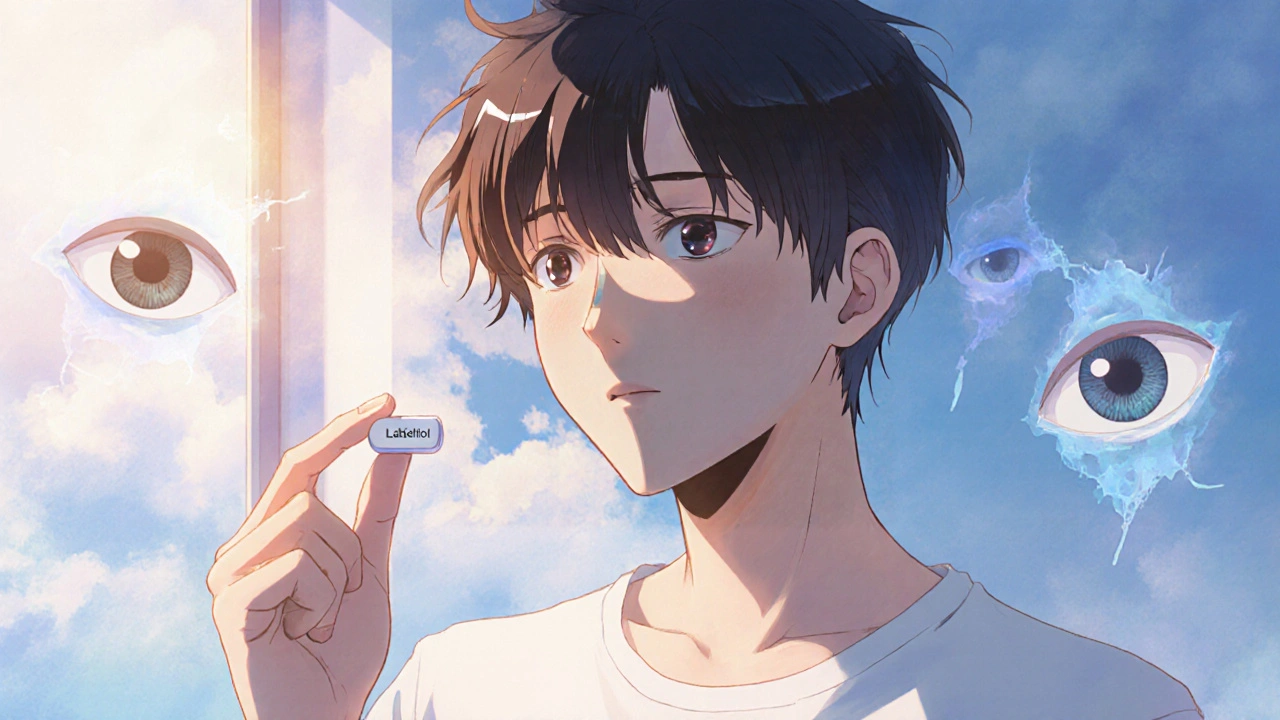Antihypertensive Eye Risks: What Every Patient Should Know
When working with antihypertensive eye risks, the potential impact of blood‑pressure medicines on vision and eye health. Also known as ocular side effects of antihypertensives, it covers any change in visual acuity, retinal structure, or ocular comfort caused by these drugs. Most people assume blood‑pressure pills only protect the heart, but the eye is a tiny window into the circulatory system. If you’re on a prescription to lower your numbers, you might wonder why a sudden glare, blurry spot, or headache shows up. That’s where the connection between antihypertensive eye risks and overall vascular health becomes clear.
First, let’s get the basics of hypertension, a chronic condition where the force of blood against artery walls stays too high. High blood pressure forces the heart to work harder and can damage tiny blood vessels throughout the body, including those that feed the retina. Controlling hypertension is essential to prevent strokes, kidney failure, and eye damage. However, the very drugs we use to tame the pressure can also tip the balance of blood flow to the eye, creating a paradox where treatment itself becomes a risk factor.
Enter antihypertensive drugs, medications like ACE inhibitors, beta‑blockers, calcium‑channel blockers, and diuretics that lower systemic blood pressure. Each class operates differently—some relax blood‑vessel walls, others reduce fluid volume, and a few blunt the heart’s beating speed. Because the eye’s blood supply is highly regulated, a sudden drop in systemic pressure can lower ocular perfusion pressure, causing the retina to receive less oxygen. This is a key reason why some patients notice vision changes soon after starting or adjusting therapy.
How Blood‑Pressure Medication Affects Ocular Perfusion
A crucial concept is ocular perfusion pressure, the net pressure driving blood through the eye’s arteries, calculated as systemic blood pressure minus intra‑ocular pressure. When antihypertensive drugs drop systemic pressure too quickly, ocular perfusion pressure can dip below the threshold needed for healthy retinal circulation. This can trigger transient ischemic episodes, especially in people with already compromised vessels due to age or diabetes. In other words, the same drug that protects your heart might momentarily starve the eye of blood.
Specific eye risks include retinal vascular disease, conditions like retinal artery occlusion, vein thrombosis, and macular edema caused by altered blood flow. A sudden narrowing of retinal arteries can lead to a painless loss of vision in a sector of the visual field. Conversely, venous congestion may present as blurry spots or dark spots that float. Some beta‑blockers, for example, have been linked to dry eye syndrome because they reduce tear‑film production, while ACE inhibitors may cause a mild, reversible increase in intra‑ocular pressure in susceptible individuals.
Older adults and patients with diabetes are especially vulnerable. Age naturally stiffens blood‑vessel walls, making them less able to compensate for rapid pressure changes. Diabetes adds another layer of microvascular damage, so any further reduction in blood flow can tip the balance toward retinal ischemia. If you belong to these groups, discussing your eye health with both your cardiologist and ophthalmologist becomes even more important.
Regular eye exams are the most effective way to catch early signs of antihypertensive eye risks. Comprehensive dilated exams let doctors see the retina’s blood vessels and detect subtle changes before they affect vision. If you notice new floaters, flashes, or sudden blurring, schedule an urgent review; these could be warnings of retinal vascular events. Simple tests like optical coherence tomography (OCT) can reveal fluid buildup or thinning of retinal layers that might be linked to medication effects.
Managing these risks doesn’t always mean stopping the medication. Often, a dose tweak, a switch to a different drug class, or timing the dose to avoid low blood pressure during sleep can help. For instance, patients on a calcium‑channel blocker who experience night‑time vision problems might move the dose to the morning. Your eye doctor may also suggest artificial tears for dry‑eye symptoms or prescribe intra‑ocular pressure‑lowering eye drops if needed.
Research backs up these practical steps. A recent study on enalapril‑hydrochlorothiazide for hypertension in chronic kidney disease highlighted not only the drug’s effectiveness but also the need for regular retinal screening due to reported cases of minor retinal thickness changes. Such findings remind us that even well‑tolerated combos can have subtle ocular footprints, reinforcing the value of vigilant monitoring.
Below you’ll find a curated set of articles that dive deeper into specific drugs, side‑effect mechanisms, and patient‑focused advice. Whether you’re looking for details on cyclophosphamide’s eye‑related toxicity, the impact of minocycline on oral health, or practical tips for buying affordable antihypertensive meds, the collection is designed to give you actionable insight and help you stay ahead of any visual surprises linked to blood‑pressure treatment.
Labetalol and Vision: Understanding Potential Eye Problems
Learn if labetalol can affect your sight, what eye symptoms to watch for, how doctors check eye health, and steps to keep your vision safe while treating hypertension.
READ MORE
